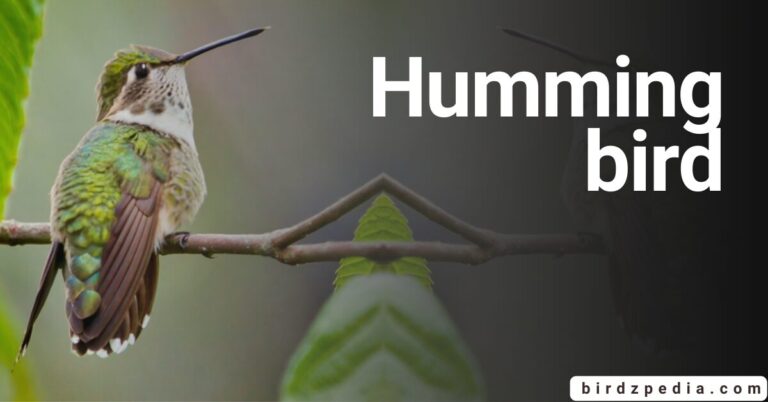Yellow-Throated Toucan [Ramphastos ambiguus]: Habitat, Diet, Sounds, Overview
Scientific Classification
| Kingdom | Phylum | Class | Order | Family | Genus | Species |
|---|---|---|---|---|---|---|
| Animalia | Chordata | Aves | Piciformes | Ramphastidae | Ramphastos | Ramphastos ambiguus |
Yellow-throated Toucan
The Yellow-throated Toucan (Raphastos ambiguus), is a species of bird within the family Ramphastidae, which also contains toucanets and aracaris. Starting in Honduras, this amazing avian resident spreads southward across the huge territory of northern South America, reaching
as far south as Peru’s diverse geography. Their population may be in danger due to its position as a Near Threatened species, which emphasizes the importance of conservation efforts to preserve both the species’ survival and the ecological balance it upholds in its natural habitats.

Summary
- Appearance: Striking black body with a distinctive yellow throat, oversized bicolored bill.
- Conservation: Classified as Near Threatened, highlighting the need for conservation efforts.
- Ecological Role: Plays a vital role in its ecosystems as a fruit-eating bird.
- Distinctive Features: Vibrant coloration, large bill, and significant ecological significance.
- Conservation Importance: Emphasizes the importance of protecting its habitat to ensure its survival and maintain ecological balance.
- Taxonomy and Systematics:
- Scientific Name: Ramphastos ambiguus
- Family: Ramphastidae
- Conservation Status: Near Threatened
- Description:
Recognizable by its vibrant yellow throat, black body, and distinctive oversized bill, the toucan is an iconic bird known for its striking appearance. - Distribution and Habitat:
Found in Central and northern South America, the bird’s habitat spans from Honduras to Peru. It resides in diverse ecosystems, contributing to the region’s ecological balance. - Movement:
The toucan exhibits agile movement, maintaining balance on tree branches while foraging and reaching for distant fruits with its beak. - Feeding:
Primarily frugivorous, they plays a significant role in seed dispersal, contributing to the health of its habitat. - Breeding:
Breeding behaviors involve establishing nests in tree cavities, showcasing the bird’s adaptability to its environment. - Vocal and Non-vocal Sounds:
Communication is predominantly through vocalizations, with the bird emitting signature calls and grunting sounds to convey messages within its social and environmental context. - Status:
Classified as Near Threatened, they faces potential risks to its population, emphasizing the need for conservation efforts to ensure its survival.
Species in same Genus
| Common Name | Scientific Name |
|---|---|
| Yellow-throated Toucan | Ramphastos ambiguus |
| Toco Toucan | Ramphastos toco |
| Channel-billed Toucan | Ramphastos vitellinus |
| Keel-billed Toucan | Ramphastos sulfuratus |
| Green-billed Toucan | Ramphastos dicolorus |
Taxonomy and systematics
They are known to have three subspecies:
Toucan with a chestnut mandible (R. a. swainsonii) – (Gould, 1833)
Toucan with a black mandible, the nominate species (R. a. ambiguus), partially – 1823 Swainson Partially black-mandibled toucan (R. a. abbreviatus) – Cabanis, 1862
Following their initial classification as a separate species, R. a. abbreviatus was subsequently reclassified as a subspecies of R. a. ambiguus. Remarkably, until about 2010, mainstream taxonomies recognized subspecies R. a. swainsonii as a distinct species.
This subspecies is identified by a 1.35% divergence in mitochondrial DNA from ambiguus.

Description
Their weigh is between 584 and 746 g (1.3 to 1.6 lb) and is 47 to 61 cm (19 to 24 in) in length. The bills of the three subspecies are typically shorter in females than in males. Male bill lengths vary from 15.1 to 19.8 cm (5.9 to 7.8 in), while female bill lengths range from
12.9 to 16.0 cm (5.1 to 6.3 in). The length of the tail ranges from 14.0 to 16.2 cm (5.5 to 6.4 in), the tarsus is 4.7 to 5.5 cm (1.9 to 2.2 in), and the wing chord is 20.4 to 24.8 cm (8.0 to 9.8 in).There is almost little difference in the feathers of the Ramphastos ambiguus subspecies.
Their uppertail has white coverts, and their hindneck and upper back have a maroon tint. They are mostly black in color. The region behind the breast is striped with white and crimson, while the face, throat, and upper breast are a vivid yellow color.
Their remarkable look is further enhanced by bright red undertail coverts and a vent. Differences in the exposed skin surrounding their eyes can be observed in R. a. ambiguus (sky blue), R. a. abbreviatus (yellow-green), and R. a. swainsonii (bright green to yellow).The three subspecies’
bills are likewise different; they all have predominantly yellow maxillas and culmens with a short black line at the base and a greenish yellow stripe. R. a. swainsonii has mandibles that are maroon to reddish chestnut brown, whilst the nominate and R. a. abbreviatus have black mandibles.
Behavior
Movement
They are found across Central and South America, where they live in arboreal environments. It travels by leaping and doing short flights across the canopy of trees. Its habitat can change even though it is not migratory depending on things like food availability.
Because it is a frugivore, it eats primarily fruits and uses its unusually wide bill to manipulate and grab food. Toucans are gregarious birds of prey, frequently gathering in couples or small groups.

Feeding
The majority of the knowledge regarding the food and foraging habits of the yellow-throated toucan comes from studying the widely distributed R. a. swainsonii. Its main food source is fruit, though it also occasionally eats little lizards, insects, and arthropods. The primary purpose of this animal debris is to feed nestlings.
In the canopy of the forest, people go foraging alone, in couples, or in small groups. The toucan also uses its quick reflexes to pick up fallen fruit from the ground by hanging upside down and jumping between branches.
Although they are not territorial, individual toucans frequently protect particular fruit-bearing trees. Notably, feeding nestlings accounts for the majority of animal materials. Foraging takes place mostly under the canopy of the forest, either alone, in couples, or in small groups.
Fruit that has fallen to the ground is also collected. To get to the fruit, you have to jump across branches and sometimes even hang upside down. Toucans do not display territorial behavior, however individual birds may often guard a particular fruit-bearing tree.
Breeding
There are regional variations in the Raphastos ambiguus breeding season; Costa Rica experiences it from March to June, Panama and Colombia from January to July, and Ecuador experiences it from December to May.
Males engage in allopreening and feeding females during courting. Although they are unable to construct tree cavities, toucans can enlarge them for nesting purposes. Usually located between 9 and 30 meters (30 and 98 feet) above the ground, these nesting locations.
The expected number of eggs in a clutch is two or three, and the length of time the eggs take to hatch and fly is unknown. In addition to helping with nest defense and young care, both parents participate.

Vocalizations
The yellow-throated toucan’s principal vocalization is a sequence of loud, far-reaching yelps that vary in pace and note count. The transcription of this unique appeal is “Díos te dé te dé,” which translates to “God give you” in Spanish.
Throughout the year, the toucan makes noise, usually from the top of trees, though it prefers to do so at dawn and twilight. The species is also known to make loud rattles, croaks, and grunts when it engages in aggressive behavior.
The rustling sound made by the toucan’s wings during flight is thought to be caused by notches in its two outer primaries. These vocalizations serve various purposes in their social communication.
- Contact Calls: They use contact calls to communicate with each other, especially when they are in pairs or small groups. These calls help maintain contact and coordinate movements within their habitat.
- Communication During Flight: When in flight, they may produce a rapid, rhythmic croaking sound. This vocalization could serve to maintain contact with other members of their group or signal their presence to other birds in the area.
- Territorial Calls: While not strictly territorial, they may use vocalizations to establish their presence in a particular area. These calls can help signal their occupancy to other toucans and birds in the vicinity.
- Courtship Calls: During the breeding season, toucans engage in courtship displays, and vocalizations play a role in this behavior. Males and females may communicate with each other using specific calls as part of the courtship ritual.

Status
According to the International Union for Conservation of Nature (IUCN), the Ramphastos ambiguus is classified as Near Threatened. Although it has a wide range, the population size is unknown and is thought to be declining.
Hunting has been cited as a major problem, but the continual change of the species’ woodland habitat for agricultural and ranching uses is the main hazard. Although the Ramphastos ambiguus shows some resistance to human disturbance and forest change,
the IUCN warns that habitat loss is the main factor that greatly affects this species. The significance of conservation initiatives to lessen these risks and protect the biological niche of the species is highlighted by this.
Lifespan
The lifespan of Ramphastos ambiguus in the wild is estimated to be around 15 to 20 years, influenced by factors like predation and environmental conditions. In captivity, with proper care, they may live over 20 years. Individual lifespans can vary due to various factors.
Common Names in Different Languages
| Language | Common Name |
|---|---|
| English | Yellow-throated Toucan |
| Spanish | Tucán Garganta Amarilla |
| French | Toucan à gorge jaune |
| German | Gelbkehltukan |
| Portuguese | Tucano-de-garganta-amarela |
| Italian | Tucano dalla gola gialla |
| Dutch | Geelkeeltucan |
| Russian | Жёлтогорлый тукан (Zholtogorlyy tukan) |
| Japanese | キバワシ (Kibawashi) |
| Chinese (Mandarin) | 黄喉巨嘴鸟 (Huáng hóu jù zuǐ niǎo) |
| Arabic | طوقان الحنجرة الصفراء (Ṭūqān al-ḥanjaṛa al-ṣafrāʾ) |
FAQs
- What is a Yellow-throated Toucan?
- In Central and South America, there exists a species of toucan known as the Ramphastos ambiguus. It is well-known for having a brilliant yellow neck patch and for having a unique, vivid appearance.
- Where do Ramphastos ambiguus live?
- They live in a variety of wooded areas, including tropical and subtropical rainforests in Ecuador, Venezuela, Colombia, Panama, and Panama.
- What do they eat?
- The main food source for them is fruit, but they also occasionally eat insects, tiny reptiles, and eggs.
- Are Yellow-throated Toucans kept as pets?
- Toucans have unique food and environmental requirements, which makes it illegal or discouraged to keep them as pets in many countries. Their natural habitat is the ideal place for them to live.
- How big do Ramphastos ambiguus get?
- With a wide and recognizable beak, adult can grow to a maximum length of 18 to 24 inches (45 to 61 cm).
- What is the purpose of the large beak on a Yellow-throated Toucan?
- In addition to being a striking and noticeable characteristic, the enormous beak has other uses, including as reaching and picking fruits off branches, controlling body temperature, and engaging in social displays.
- Are Ramphastos ambiguus endangered?
- Although their conservation status varies throughout its range, it is usually regarded as a species of least concern. On the other hand, their populations may be threatened by habitat degradation and the illicit pet trade.
- Do Ramphastos ambiguus migrate?
- Long-distance migrations are not typically associated with toucans. Their migrations are frequently correlated with shifting breeding seasons and food availability.


![Pelagic cormorant: [Urile pelagicus] Odyssey Habitat, and Overview](https://birdzpedia.com/wp-content/uploads/2024/01/Channel-Billed-Toucan-1-768x402.png)
![Choco Toucan[Ramphastos brevis] Tales and Overview](https://birdzpedia.com/wp-content/uploads/2024/01/Ramphastos-brevis-768x402.jpg)
![Black Oystercatcher [Haematopus bachmani] Habitat, Characteristics, Facts](https://birdzpedia.com/wp-content/uploads/2023/12/Black-Crow-768x402.png)


![Southern Ground Hornbill [Bucorvus leadbeateri]: Complete Guide](https://birdzpedia.com/wp-content/uploads/2024/01/Bucorvus-leadbeateri-768x402.jpg)